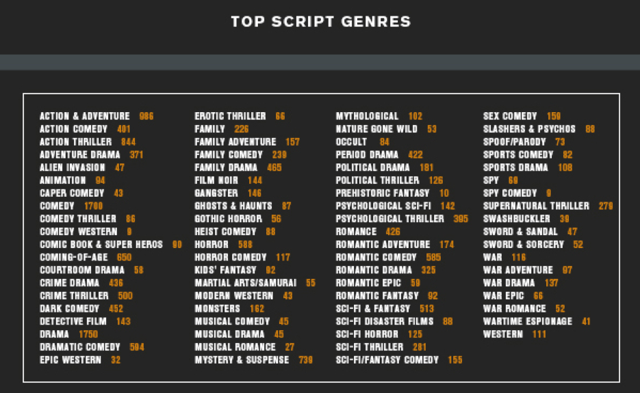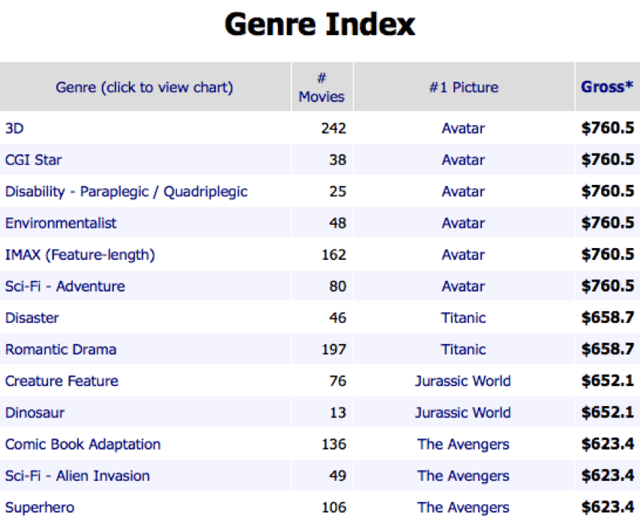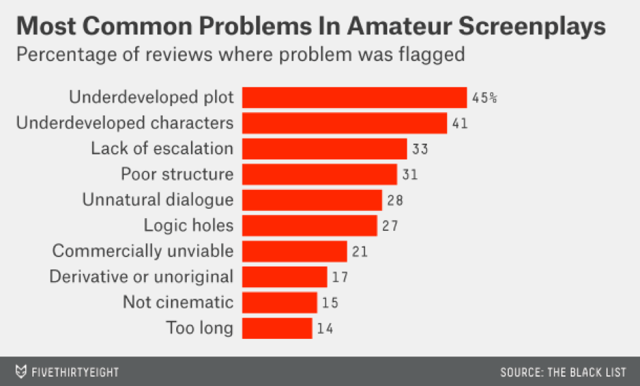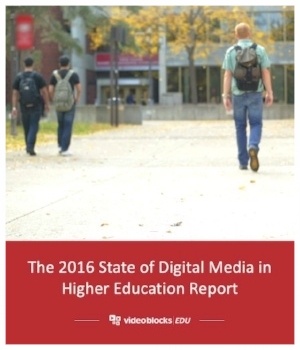
For a long time now Hollywood has branded itself as an industry of artists and risk takers—innovators of art, not science; however, audiences would be surprised by the level of data analysis behind every aspect of film. From highly publicized success stories such as Netflix’s House of Cards to the award-winning film The King’s Speech, commercial success has become more of a numbers game than ever before.Studios now have access to an enormous amount of audience data, from preferences in plot structure to leading characters, and they analyze this data to evaluate risks and rewards of any project before green lighting it—just as all student filmmakers should, whether or not they have a background in data science. Though many students’ degrees will one day have “of Arts” rather than “of Science” printed on them, students can still embrace the practical, results-oriented framework of data-driven disciplines to guide their creative process.
Business as Usual
At first blush, using data in the employ of storytelling might seem contradictory to the artistic aura of the film industry—a place where innate genius reigns supreme, from neurotic auteurs à la Woody Allen to industry luminaries like Steven Spielberg and David Fincher. Yet, creative vision has always been a highly prized but limited currency in the picture business. Jack Warner, Louis B. Mayer, and the other important movers and shakers of Hollywood’s Golden Age were savvy, and at times despotic, businessmen who relied on facts and figures as much as on creative intuition to maximize the returns on their investments.
If the outpouring of internal emails from the recent Sony hack has proved anything, it’s that this mindset certainly hasn’t changed for the modern industry. According to the MPAA’s annual Theatrical Markets Report, in 2014 there were 707 films produced in the U.S. and Canada, grossing $10.4 billion in the box office. Though it might seem laughable to ever look at more than $10 billion in revenue as a negative, it represents a 5% decrease from the year before, as well as a larger downward trend in domestic box office grosses over the last decade. Using the massive amount of information now available on consumer behavior, studios and investors have begun to combat this change in the market by better targeting their movies for both large audience appeal and critical acclaim.
But data isn’t just for big name studios. Aspiring directors, writers, and film students can adopt the same framework as prominent media moguls when making decisions, even without a team of analysts on speed dial. The three most important ways that Hollywood uses data to improve its films—through brainstorming, courting investors, and script revisions—are also easily done on an indie scale with readily available resources from box offices and online.
Smarter Brainstorming
Production companies turn to data when considering what types of projects to pursue, using the information at hand to home in on particular genres or styles of filmmaking that are more likely to generate strong returns. Most famously, Netflix used this approach to conceptualize its breakout hit House of Cards, noting that many of its users who enjoyed watching Kevin Spacey films also streamed David Fincher’s The Social Network and the original BBC House of Cards, and that they were also more likely to watch other gritty political dramas.
While many new writers and directors want to produce projects that reflect their creative voices and distinguish them from rest of the herd, culling data from film databases can provide useful insight for students as to which genres or formats are more likely to succeed at festivals or on the spec script market, as well as which genres are over-used.

(Table of most frequently used genres for spec scripts courtesy of the Black List 2013 Annual Report)
The key to targeted brainstorming through data lies in first identifying a project’s objectives, which will in turn determine what information sources will be most useful. Is the aim for project achieving success on the festival circuit or to shop the project around Hollywood? Most film festivals—including Sundance, SXSW, and Cannes—keep freely accessible digital archives of their annual awards, while statistics on Hollywood box office or critical successes, particularly in terms of genre or format, can be found through databases like Box Office Mojo and Rotten Tomatoes. By analyzing this historical data, students should be able to easily identify key trends in the film market to help inform their creative process.
Persuading Investors
Data isn’t just good for deciding on what type of project to make, but also for getting financial backers. Hollywood frequently uses box office returns and award season statistics to demonstrate proof of concept—particularly the possible success of a genre, style, or format—before green lighting a production. Student filmmakers, too, should adopt this mentality by using these performance numbers to strengthen their pitches to investors.

(Box office index ranked by highest grossing genre courtesy of Box Office Mojo)
Previously we’ve written about the increasing relevance of crowdfunding for student films and the importance of preparing a strong pitch for these fundraising platforms; a detailed and researched project proposal is essential to gaining the confidence of potential backers while also proving that the students understand the stakes and complexities involved. Even if students are planning to seek funds through more traditional avenues, they should still use data from festival awards, box office successes, and even the Academy Awards to prove the viability and bankability of their projects.
Polishing Scripts
It might seem as though film studios only crunch numbers for budgetary decisions, but media companies are also embracing data as part of the writing process, using statistics-driven analyses to perfect film scripts and, ultimately, maximize their earning potential. Last year the statistical analysis news site FiveThirtyEight studied the most successful scripts, as scored by Hollywood insiders, in conjunction with the Black List, a script database built around finding and promoting scripts with the highest boffo potential. Their findings, which are available online, highlight some of the biggest traps aspiring screenwriters fall into, from not thoroughly developing plot or characters to including too many hackneyed clichés when writing legal dramas.

(Chart courtesy of FiveThirtyEight)
Employing a small legion of vetted development executives and script readers, the Black List ranks as-of-yet unproduced scripts hosted on its database—to which anyone, including student filmmakers, can submit for a small fee—and connects works with high box office potential with studios. Though students might balk at the prospect of having to pay $25 to $50 to have their scripts read, the Black List’s successes include The King’s Speech, Slumdog Millionaire, and The Imitation Game, and students can also receive feedback from the readers reviewing their work.
Data in Service of Creativity
Of course, it takes more than a thorough statistical analysis to make a hit movie or TV show. Artistic vision will always be paramount to great works—whether they become commercial successes or not. By studying the numbers, film students can learn a lot about both the entertainment industry and the craft of storytelling; the point is not to replace creativity with science but to enhance the creative process with a little extra guidance from big data.


